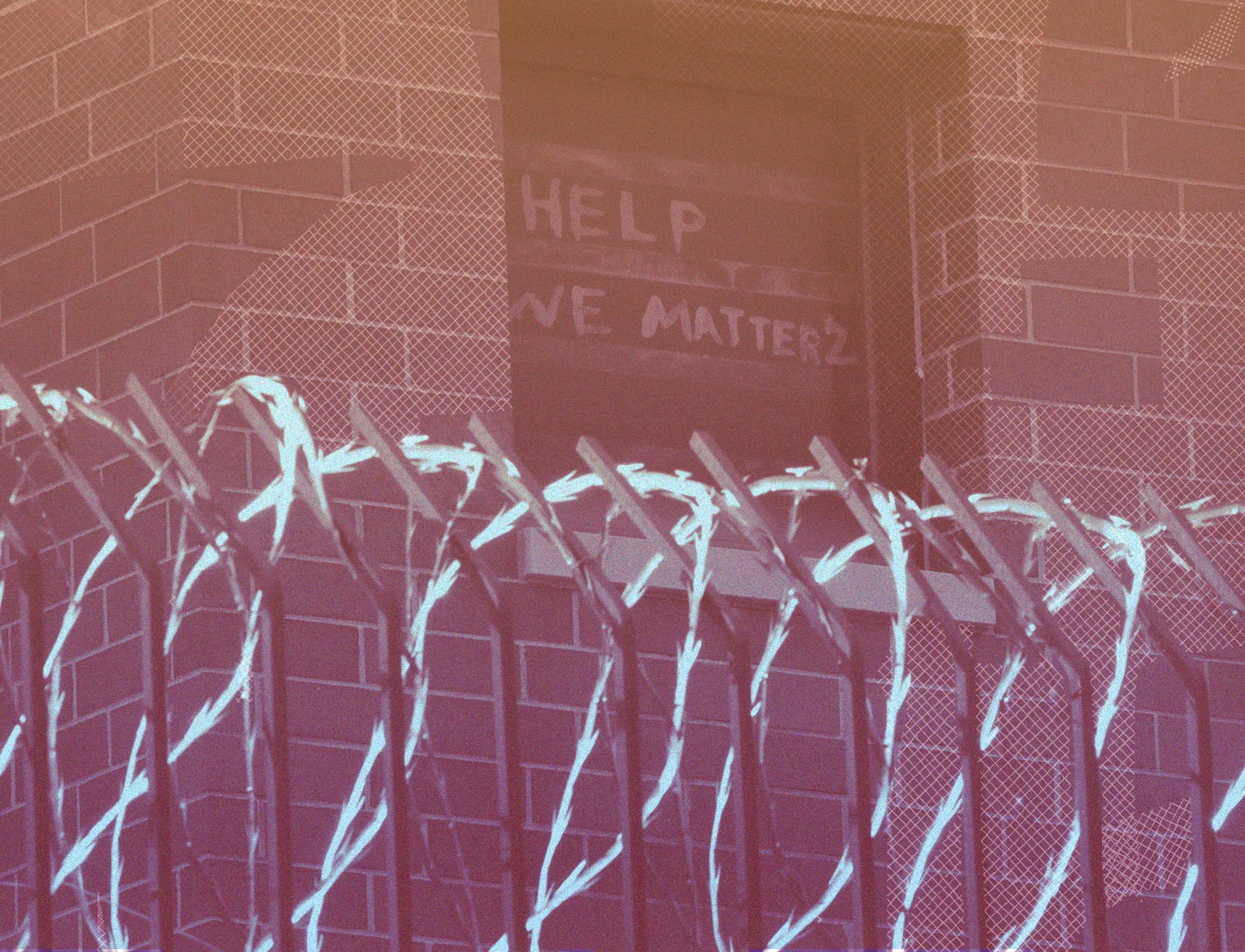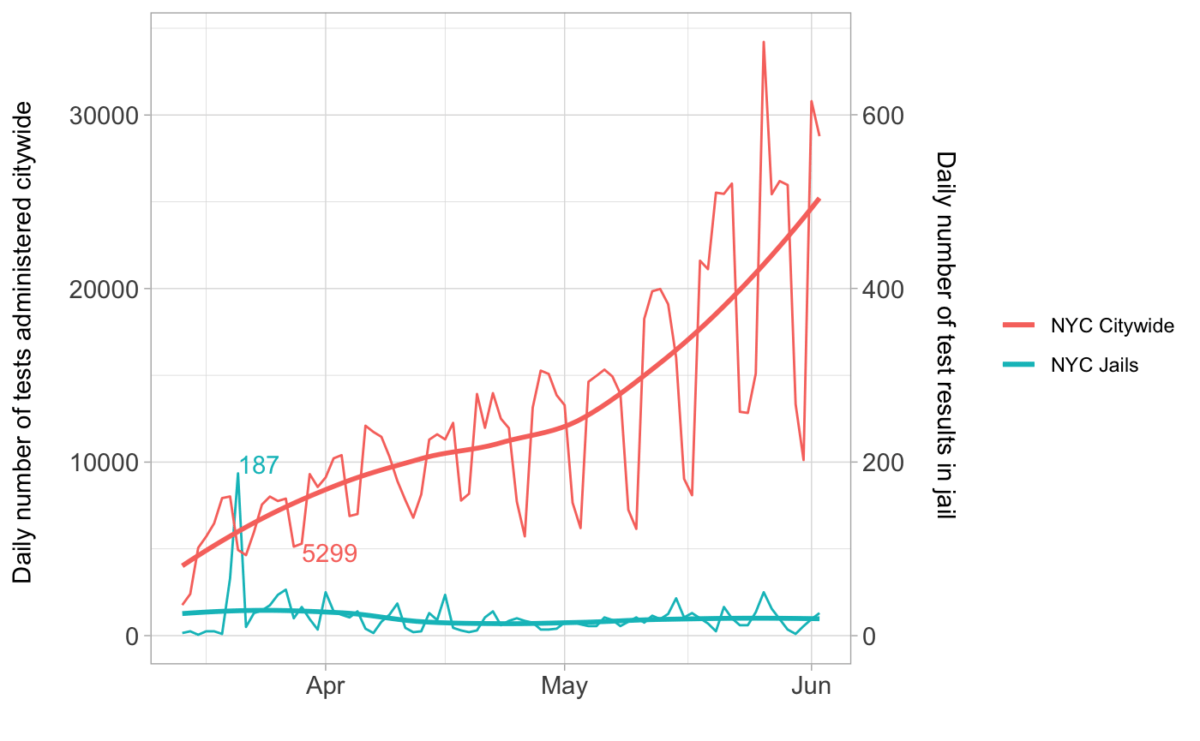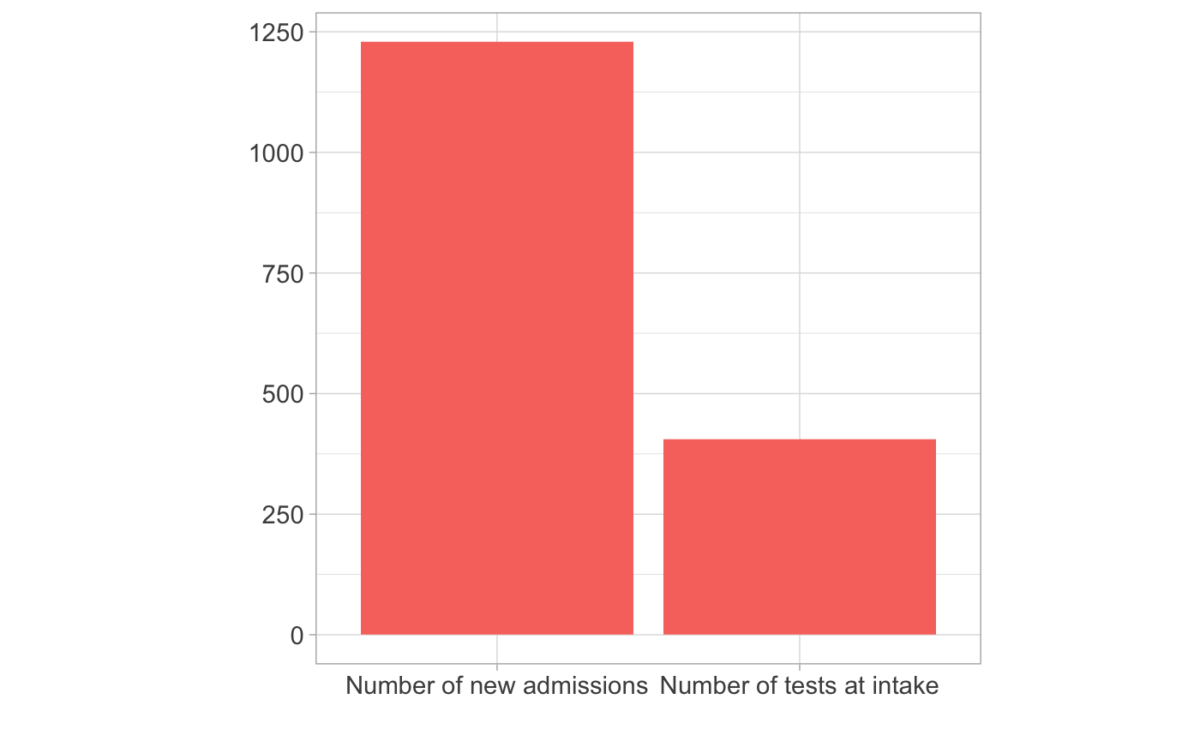There Must Be Mass Releases From NYC Jails Immediately – It’s The Only Way To Protect Public Health
New data obtained through a Freedom of Information Law request paint a dire picture of New York City COVID-19 testing in its jails.

This piece is a commentary, part of The Appeal’s collection of opinion and analysis.
After nearly three months of lockdown, New York City began easing its quarantine restrictions on June 8. In early July, the city entered “Phase III” of reopening. But New York never really closed the source of some of its most acute COVID-19 outbreaks: its jails.
Now, numbers we obtained through a Freedom of Information Law request paint a far different picture of the city’s COVID-19 testing in its jails than the public has been told. As a public defender and two epidemiologists, we are calling for the release of many more people from our jails—and for immediate action to keep more out.
COVID-19 has raged through New York City’s jails. Over 2,000 incarcerated people and jail staff have been infected; three incarcerated people and at least thirteen staff members have died.
Public defenders are witnessing the catastrophic effects of the ongoing crises of health and justice. Many of our clients come from the very communities disproportionately devastated by both mass incarceration and COVID-19. Both crises exemplify our society’s disregard for Black lives.
For months, advocates and oversight bodies asked city agencies to release internal COVID-tracking data from the jails to corroborate claims of “aggressive testing”. Those numbers, finally obtained from NYC Correctional Health Services through our FOIL request, do not support the city’s claims about their pandemic response in NYC jails.
Our initial analysis reveals that from late March to late April, when NYC’s jails endured the worst of their initial COVID-19 outbreak, there was no sustained expansion of the scope of detainee testing in the face of mounting infections. By contrast, testing numbers for the city at large increased dramatically as city infections grew, and even as infections began to decline.

In May 19 City Council testimony, city corrections officials declared that all newly incarcerated people were being “universally” tested. Yet according to these new numbers, this was never true. During the period from April 27 (when the jails began tracking new admissions testing) through June 2, only about one-third of the approximately 1,200 new jail admissions were tested upon intake.

Meanwhile, officials have repeatedly emphasized in public comments that newly incarcerated people are a primary source of new infections in the jails. If that’s true, why aren’t they being universally tested, as our government said they were? And while we’re at it, why isn’t the city conducting universal testing in COVID-ravaged Rikers Island? Is it a problem of capacity—not enough tests, not enough healthy front-line workers to administer them, not enough laboratory bandwidth to analyze them—or is it simply a conscious decision not to use available resources on NYC’s jail population? Either answer is sobering, to say the least, and jail officials to date have given zero indication that the jails lack testing capacity.
Those with the power to reduce NYC’s jail population have not done enough. Releases have been too slow and too few. Local jails play a central role in the overall spread of COVID-19. Yet the weekly number of people put in jail has risen since early April. As epidemiologists, we recently authored a study and follow-up article analyzing county jails nationwide over a 30-year period. We found that increases in county incarceration rates were associated with higher death rates from infectious disease. We feared that COVID-19 outbreaks in jails would lead to more widespread illness and death. Tragically, this is precisely what has happened.
In late March, as oversight agencies, incarcerated people, and others were sounding the alarm, NYC’s district attorneys asked Mayor Bill de Blasio to announce that Rikers was perfectly capable of handling its COVID-19 outbreak; the chief doctor for the city’s jail system vehemently disagreed. From late March through April, when the initial jail outbreak was raging, prosecutors fought tooth and nail against even obvious candidates for release, often arguing that detainees were better off staying in jail. In NYC alone, the New York state parole system has kept hundreds of people in jail during the pandemic for “technical violations,” many of which amount to missing appointments or phone calls with parole officers. Two people who died in city custody from COVID-related illness were in jail for months for this very reason.
As NYC continues to ease lockdown restrictions, U.S. infection rates continue to rise, and the rate of new incarcerations in NYC has resumed its steady march, these newly revealed gaps in our jails’ COVID-19 response risk undermining NYC’s hard-fought progress against the coronavirus.
We have no doubt that the heroic front-line workers risking their lives to care for those held in NYC’s jails are doing their very best in an impossible situation. But the essence of that impossible situation is that NYC’s jails simply are not built to protect the jailed—the majority of whom are Black, many of whom are medically vulnerable, and the vast majority of whom are being held pretrial without being convicted— from a potential death sentence.
No part of our system should be spared from the responsibility to keep people out of jail right now. NYPD’s aggressive, racist policing practices must end. Prosecutors’ and judges’ inclinations toward pretrial detention and jail sentences must change. The mid-pandemic dead-of-night bail reform rollbacks must be repealed. NYPD leadership must stop spreading the falsehood, refuted by their own data, that recent shootings are linked to COVID-related jail and prison releases and bail reform. The parole system must stop jailing people over missed appointments.
And of course, the city must be fully transparent about its handling of the COVID-19 crisis in our jails. Advocates and the public should be able to understand what’s happening in the jails in real time.
The scourge of COVID-19 isn’t going away anytime soon. The city government’s inability—or unwillingness—to pursue a meaningful level of jail testing throughout this pandemic should be the final straw. If anyone believed that New York City’s government would provide sufficient resources for the jails to weather this unprecedented and ongoing health crisis, that illusion has been shattered.
The only way to protect the public’s health and the lives of those imprisoned and working in our jails is to immediately release many more people and keep them out.
If we don’t, all our sacrifices to date could be for naught. And Black communities will again bear the worst of the burden.
We know those in power can act urgently when they choose. We hope they do not instead merely stand and watch.
